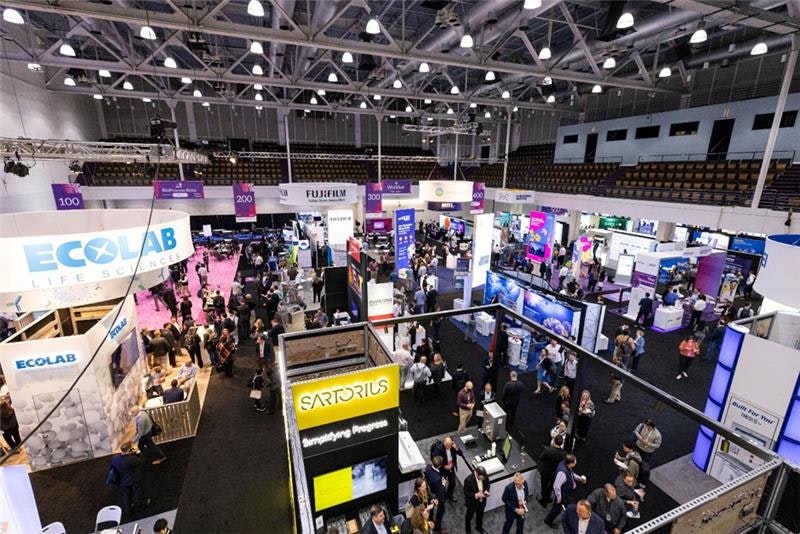
Future-Proofing Cell & Gene Therapies
Accelerate Therapies From Bench to Bedside. Catalyzing Patient Access. Forging Strategic Partnerships
R&D • Manufacturing • Analytics • Supply Chain • Investment

Sneak a Peek at What's in Store for 2025!
Be the first to discover what's coming to Cell & Gene Therapy International 2025! Register your interest today and get exclusive early access to:
✅ 2024 Keynote Session – Watch one of the most talked-about presentations from last year.
✅ Core Agenda Themes – Get a glimpse of the key topics shaping next year’s discussions.
✅ 10% Discount – Enjoy an exclusive saving when registration opens!
Sign up now and stay up to date.
Leading Minds Unveiling Game-Changing Breakthroughs
Our 2025 event offers an exciting deep dive into the newest breakthroughs shaping the CGT industry. Hear straight from the experts, pick up real-world strategies, and learn how to take every phase of cell and gene therapy production to the next level.
Early confirmed speakers taking the stage in 2025 include:
Top Cell and Gene Therapy Companies Attended in 2024

Highlights from Cell & Gene Therapy International 2024
Whether you joined us in Boston or missed out, experience the highlights of Cell & Gene International 2024 for a glimpse of what's in store in September!
From baristas to manicurists, daily live music and wine & cheese, lobster rolls and even a masseuse, Cell & Gene Therapy International 2024 was an experience to remember.
✓ 3200+ bioprocessing professionals from 36 countries
✓ All top 20 largest biopharma companies
✓ 100+ startups
✓ 340+ industry leading speakers across 9 tracks
✓ 220+ exhibitors supporting the entire bioprocessing spectrum
✓ Networking party at Museum of Science
Cell & Gene Therapy International … The Numbers:
+
Global attendees from top biopharmaceutical companies to emerging CGT start-ups
+
Sponsors & exhibitors devoted to accelerating your product through the pipeline to market
+
Industry speakers across 3 tracks
Solve Your Scientific, Technology and Networking Needs
Newest Tech in R&D and Manufacturing
Our Exhibit Hall features 220+ exhibitors showcasing cutting-edge tech and solutions to fast-track your cell and gene therapies to commercial success.
Don’t miss our Live Lab tours for exclusive product demos.
Showcase Your Research: Poster Presentations
Share your latest scientific discoveries with the CGT community in our dynamic poster sessions—right at the heart of the exhibit hall.
Gain industry recognition, connect with leading experts, and ignite collaborations that drive innovation forward
Connect, Recharge, and Thrive: Ultimate On-Site Experience!
Enjoy our vibrant café spaces, energizing wellness activities, and fully equipped workspaces designed to support your well-being and boost your productivity. Whether you’re unwinding or getting things done, our amenities have you covered!
Don’t miss our unforgettable networking night at the Museum of Science—where connections spark and memories are made!
Investor and Big Pharma Insights - Your Burning Questions, Answered
Eager to discover where Big Pharma is focusing its CGT investments? Want to know how to navigate the competitive funding landscape and position yourself for success?
Don’t miss our exciting Investor and Big Pharma keynote panel discussions, debuting in 2025!
Boston: The Heart of U.S. Biotech Innovation
With over 1,000 biotech companies and world-renowned universities, Boston is a powerhouse for life sciences.
Join Cell & Gene Therapy International at Biotech Week Boston—where the industry’s brightest minds unite to shape the future of medicine.
ConnectMe: Your Gateway to Meaningful CGT Connections
Supercharge your networking with our industry-leading ConnectMe app.
Launching 4 weeks before the event, it offers AI-powered matchmaking, real-time event updates, and an instant meeting scheduler —making it easier than ever to connect, collaborate, and maximize your event experience.
Boost Efficiency, Cut Costs & Scale Smarter—Making Cell & Gene Therapy More Accessible!
From development to production, learn how to optimize every phase and expand patient access like never before!
Your ticket includes access to all conference sessions, interactive discussions, and networking opportunities, plus 12 months of on-demand recordings to enhance your learning.
Cell Therapy Manufacturing & Analytics
- Manufacturing & Scale Out Strategies – Autologous, Allogeneic, iPSC, Gene Edited Cell Therapies
- Novel Analytical Technologies for Process & Product Characterization and Validation
- Automation, Closed and Integrated Systems
- CDMO Selection and External Manufacturing Best Practices
Gene Therapy Manufacturing & Analytics
- Reducing CoGs without Compromising Quality in Gene Therapy Manufacturing
- Optimizing Cell Line Development & Upstream Processing
- Maximizing Capsid Recovery: Downstream Processing Advances
- Innovative Analytics: Mastering BLA Submissions, Characterization, Potency, Purity, Process Control and Comparability
Development of Emerging Cell & Gene Therapies
- Harness AI and Disruptive Technologies for Targeted Delivery
- Leveraging Gene Editing Technologies for Precision and Efficiency
- Optimizing Non-Viral Delivery Systems
- Product Development Case Studies for Next Gen Products – In Vivo CAR-T, Gamma Delta T Cells & T Cell Engagers, Combination Cell Therapies etc.
Supercharge Your Learning Experience...
2 new pre-conference workshop options at your fingertips, to upskill the whole team:
- Potency Masterclass
- Tech Transfer Roadmap: Best Practices for CGT Manufacturing
Supply Chain Forum - New for 2025
Navigate the complexities of supply chain management for CGTs in this exclusive closed group setting for supply chain executives.
Walk away with comprehensive insights from peers into innovations, tools and trends to enhance efficiency, visibility and responsiveness across the entire supply chain network.
C-Level Forum – New for 2025
Access top pharma and industry experts in a closed group setting amongst your C-level peers.
Brainstorm solutions to the most pressing and current challenges in the CGT sector, leaving with actionable strategies to drive your business and the sector forward.
Enhanced On-Site Experience
Connect, Recharge, and Thrive
Discover our enhanced on-site offerings designed to keep you energized, connected, and focused. Enjoy vibrant café spaces, wellness areas, and fully equipped workspaces, all tailored to support your well-being and productivity. Whether you’re looking to relax, recharge, or get work done, our improved amenities are here to help you make the most of your time at the event.

Engage Qualified Cell and Gene Therapy Decision-Makers!
Whether you're increasing your company profile, launching a new product or focusing on new business development opportunities, collaborate with us to identify custom solutions to help you reach your sales and marketing goals.
Contact us directly to learn more about sponsorship opportunities:
Companies #, A-L: Jennifer Wickett, JWickett@informaconnectls.com
Companies M-Z: Kristen Schott, KSchott@informaconnectls.com










































